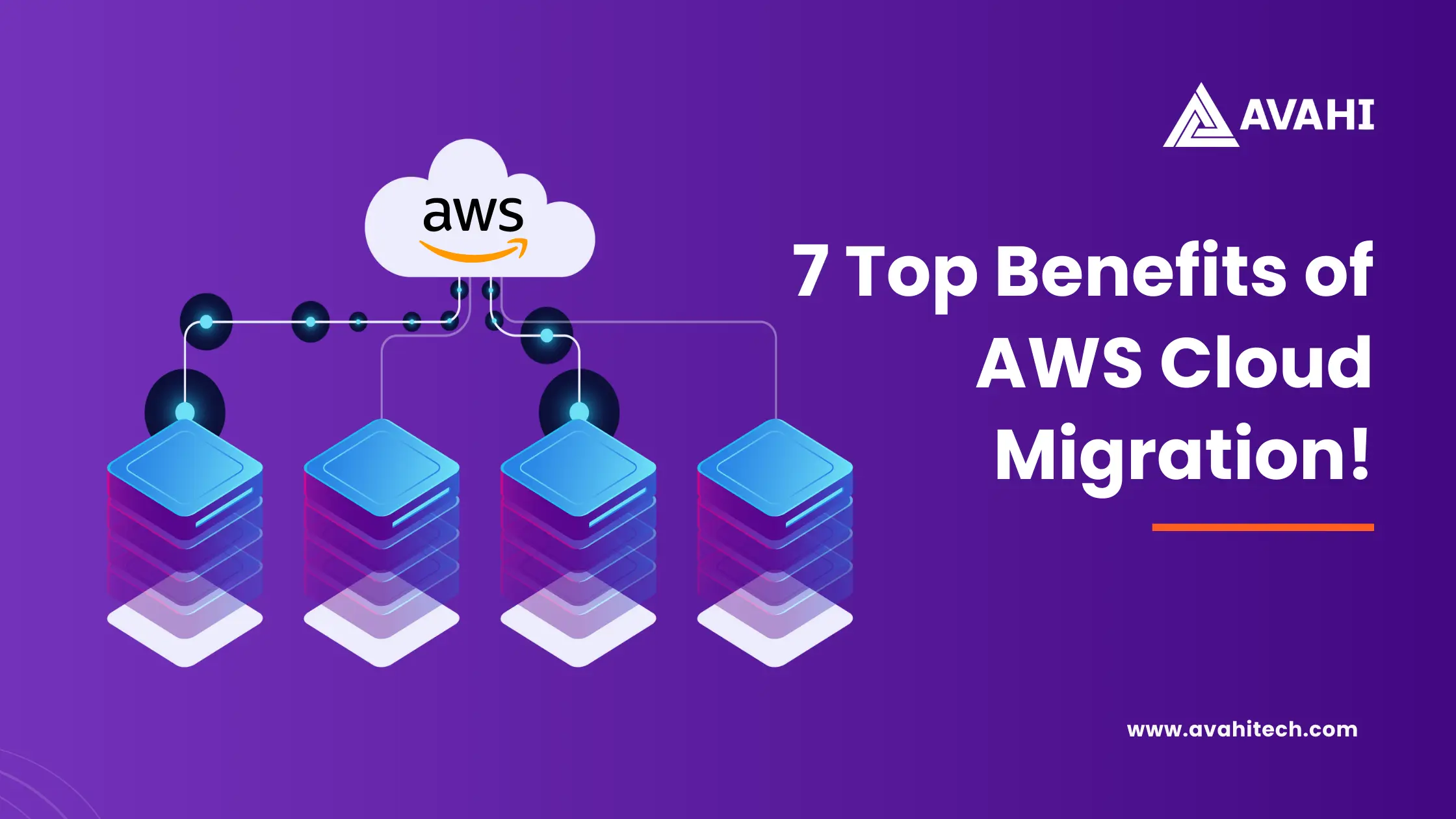Organizations are increasingly looking to migrate their on-premise infrastructure to the cloud in order to better support rapidly changing business requirements and market dynamics.
The benefits of migrating to AWS go beyond just simplifying operations, increasing resource utilization, and moving away from traditional on-premise infrastructure.
AWS offers purpose-built networking, storage, and compute services that can increase scalability, reliability, flexibility, and performance.
With over 200 services, AWS has something for everyone – whether an organization wants to deploy applications across the globe as quickly as possible or deploy specific application workloads closer to their end users to achieve low latency.
Let’s discuss the top benefits of AWS cloud migration that can help businesses innovate faster, become more agile, and lower costs.
What Are The Top Benefits of AWS Cloud Migration?
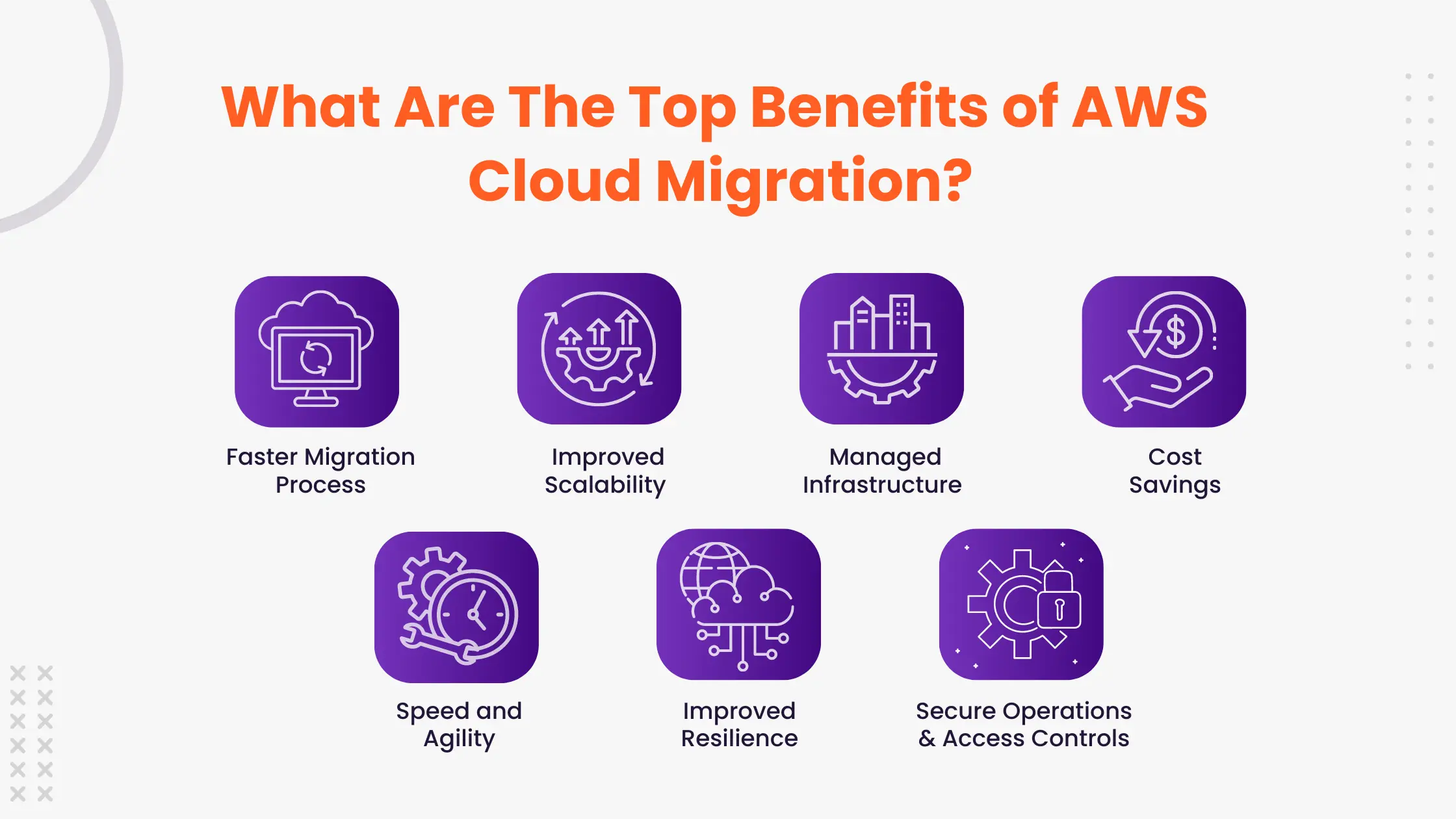
1. Faster Migration Process
Migrating to AWS gives businesses the immediate advantage of AWS’s end-to-end infrastructure. Whether you are moving your entire data center to the cloud or rehosting workloads, AWS provides a wide range of services to make it faster, safer, and more cost-effective to migrate.
AWS also offers numerous in-built and third-party migration tools that allow users to choose custom migration solutions most suitable for their workloads.
Organizations can also partner with AWS-certified experts with experience in handling end-to-end migration to further speed up the process and increase overall efficiency.
2. Improved Scalability
When you migrate to AWS, it becomes possible to quickly scale your storage, networking, or compute resources depending on the dynamically changing demands. Even with minimal planning, you can provision additional resources required to support your workloads and achieve high scalability.
You can use AWS autoscaling features to automatically monitor applications and adjust their resource capacity, which can help maintain a steady performance at the most optimum prices possible. There is also the added flexibility of matching your workload requirements with your cloud budget using AWS’s intelligent optimization tools.
3. Managed Infrastructure
Maintaining IT infrastructure is at the heart of every digitization initiative. But maintaining legacy on-premises infrastructure can be challenging, often leading to bottlenecks and decreased agility.
By migrating to AWS, businesses can focus on scaling their operations and innovating at a faster pace while AWS manages the infrastructure for them. As a direct result, the total cost of ownership (TCO) decreases drastically as the need for infrastructure maintenance is eliminated.
Leveraging managed services offered by AWS eliminates the burden of managing backups, security functions, monitoring, patching, and other functions. AWS cloud migration gives businesses the benefit of delivering great services to their customers instead of worrying about hiring and training a big IT team just to manage their on-premise infrastructure.
4. Cost Savings
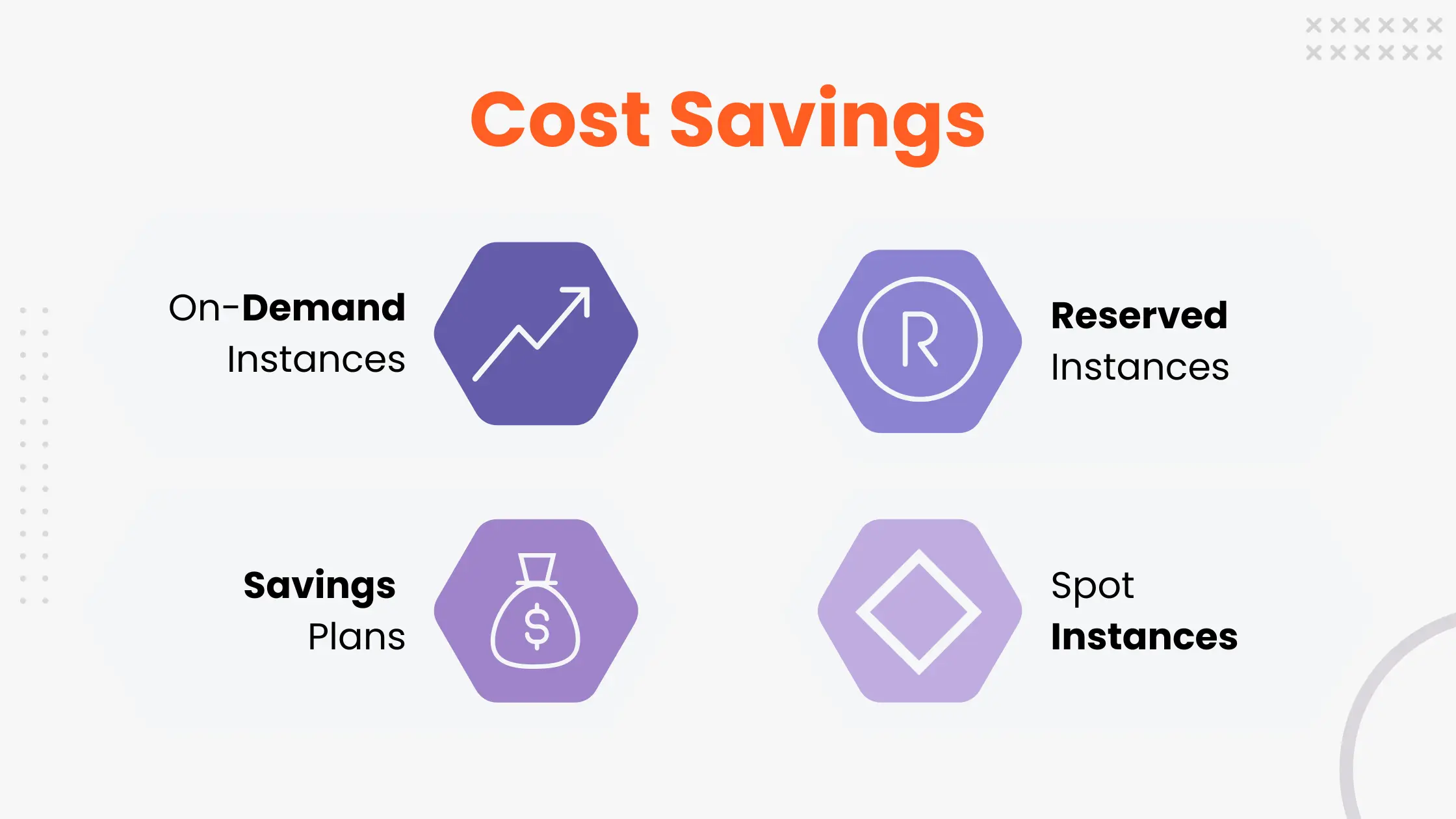
Apart from the obvious advantage of Infrastructure as a Service (IaaS), the pay-as-you-go pricing model offered by AWS gives you the flexibility to only pay for the resources you are provisioning at the moment. You can terminate unused or underutilized resources and also rightsize resources to ensure they don’t drive up costs. AWS also offers several ways to save up on costs, including:
- On-Demand Instances: This involves pricing services based on their actual usage. They are more suitable for organizations that prefer no upfront time commitments and have mission-critical applications with unpredictable spikes in demand.
- Savings Plans: This is a flexible pricing model which can save up costs on AWS usage by up to 72%. It is more suitable for businesses that want flexibility but don’t want to pay up any upfront costs. Savings Plans can support applications with varying usage needs that will likely stay active for a long time.
- Reserved Instances: Committing to reserved instances for a period of one or three years can get you discounts of up to 75%. Since you can’t get rid of reserved instances once you have committed to them, they are more suitable for applications with predictable usage patterns.
- Spot Instances: Available with Amazon EC2, spot instances can help you save up to 90% on costs compared to on-demand instances. You bid on spare computing capacity that is available on Amazon’s open market, and if your bid wins, you get the spot instance. However, spot instances can get terminated at any time if the instance capacity is not present or if the current price of the spot instance exceeds your bid price. As a result, these instances are more suitable applications that are stateless or have non-critical workloads.
5. Speed and Agility
By allowing its users to provision resources in just a few clicks, AWS can boost time to market and accelerate the deployment pace for applications and new features with lesser errors. With AWS, it is possible to decrease total time to market by 37% and increase code deployment efficiency by over 343%.
This can lead to increased speed and agility when deploying applications to the cloud, allowing organizations to offer top application performance and improved customer experience without spending high fees on cloud costs.
6. Improved Resilience
As a cloud service provider, AWS handles the maintenance and security of its data centers. When businesses no longer need to invest heavily in data storage and security, it directly allows them to reallocate their IT budgets for security and maintenance towards their new innovation and growth-focused initiatives.
The high availability and resilience offered by AWS allow businesses to improve their SLAs (service level agreements), all the while reducing overall risks and unplanned downtime. By using AWS, businesses have been able to decrease their downtime by 57% and the number of critical incidents by over 32%.
7. Secure Operations And Access Controls
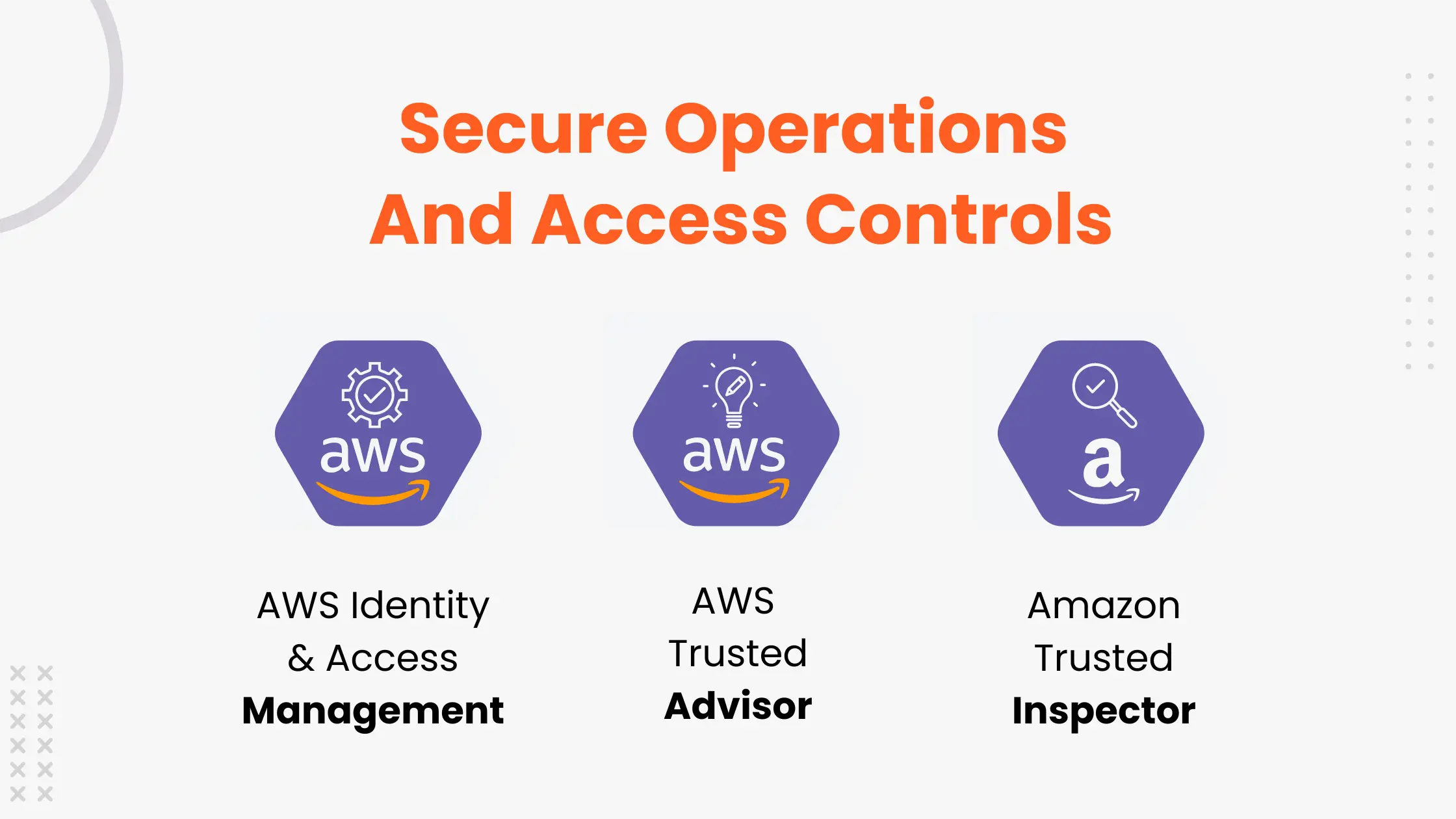
AWS offers a broad range of tools to help customers protect the integrity of their data and constantly monitor their operations. Some of the many features offered by AWS for secure operations and access control include:
- AWS IAM (Identity and Access Management): It is a web service that allows you to control access to your AWS resources in a secure manner. You can grant, monitor, and revoke user access anytime through a centralized dashboard.
- AWS Trusted Advisor: It carefully evaluates your account and provides recommendations to users to help them follow the best practices set out by AWS. The tool can perform regular security checks in order to protect your AWS account against unauthorized access, DDoS attacks, and hacking.
- Amazon Inspector: It is an automated vulnerability assessment tool that continuously scans your AWS infrastructure and workloads to look for any unintentional network exposure or software vulnerabilities before they lead to bigger problems.
Streamline AWS Cloud Migration with Avahi
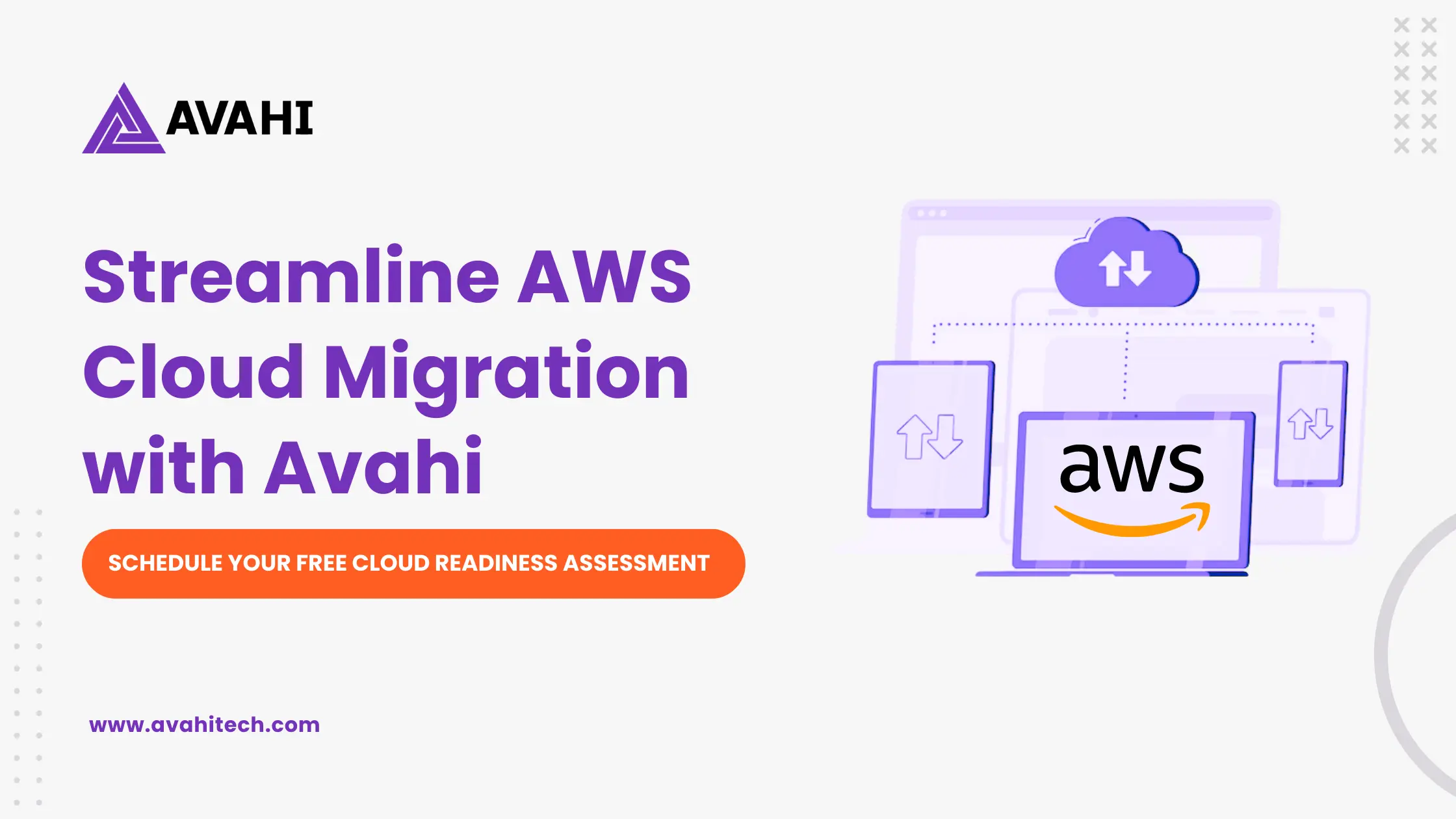
Accelerate your AWS migration and digital transformation journey to the cloud with Avahi as your cloud migration partner. We can help you seamlessly migrate your workloads from on-premises environments or other public cloud providers.
We get an in-depth understanding of your existing infrastructure to create a custom migration strategy that perfectly fits your business goals and challenges before we move forward with the actual migration. Our team of AWS-certified experts can execute migration end to end with zero data loss, no disruption, and minimal downtime.
Ready to get started?
Reach out to us to learn more about how we can help you streamline your AWS cloud migration process.

